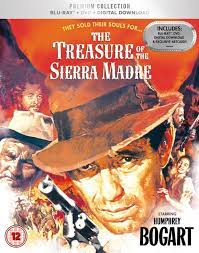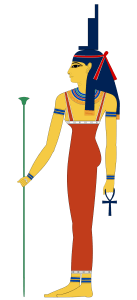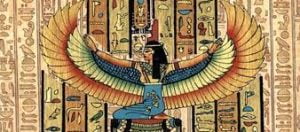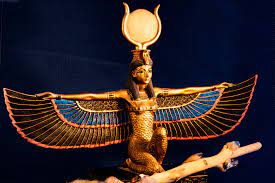‘Isis’ Live
Boston Music Hall 21 November 1975. The first of two shows on that day by the Rolling Thunder Revue. Accompanied by a wild and ragged ten piece band, featuring five or sometimes six guitarists and the distinctive ‘gypsy violin’ of Scarlet Rivera, Bob Dylan has already powered through dynamic and forceful interpretations of It Ain’t Me Babe, The Lonesome Death of Hattie Carroll and A Hard Rain’s A-Gonna Fall, all originally acoustic numbers. But the climax of the first part of the set comes when he lays down his guitar and stands centre stage to deliver an astounding powerful rendition of Isis; originally recorded as a mid-paced piano-driven ballad on the yet-to-be-released Desire album. Now the band follows Bob through the stop-start dynamics of this extraordinary song, which has developed in live performances into a devastating tour de force of lyrical and musical drama. Attired in his Rolling Thunder regalia – waistcoat, flowery hat, scarf and white face make up – he clenches and unclenches his fists, crossing and uncrossing his hands, like a combination of a scary clown and frustrated prize fighter, as if his life depends on it, his eyes flashing as he acts out the building dramatic tension. Despite the apparently obscure story that he is relating, there is no doubt that, to him, this is an intensely personal song.

‘Isis’ expressed
Perhaps the most dramatic moment of all in this extreme expression of poetic angst occurs near the end of the performance as Dylan acts out a conversation between his narrator and the object of his love – the ‘mystical child’ Isis herself. In each line he answers her enquires about what he has been doing, until finally she asks him if he is going to stay with her. Summoning up all his manic energies, channelling what sounds like a lifetime of frustration and desire and blessed relief, he almost screams …If you want me to… YES!!!… It is a moment of affirmation that can only be compared to his monumental instruction to …Play Fucking Loud!… after being famously accused of being a ‘Judas’ at Manchester Free Trade Hall in 1966. As Dylan hits the harmonica, the band goes absolutely ape. Lead guitarist Mick Ronson is almost doubled over as Bob and Scarlet stalk the stage. Then bassist Rob Stoner leans in to duet with Bob on the final verse … What drives me to you… Bob sings, wild eyed …Is what drives me insane…

At the climax of the performance, Dylan appears to be channelling Hamlet – a young man driven mad by the turbulent circumstances of his life and the impossible moral conundrums he is faced with. Perhaps, like The Dane, he is only pretending to be crazy. After all, he is in costume, hiding beneath his white face ‘Bob Dylan mask’. But the performance is so compelling, so thrilling, so life-enhancing – especially as he delivers that apocalyptic …YES!!!… – that we cannot resist sympathising with him. In that ‘to be or not to be’ moment he is clearly and unequivocally choosing the first option. Although his years of domestic bliss, relaxation and recovery may be over, from now on – whatever life throws at him – he will face up to it with unremitting courage and unswerving dedication.

JACQUES LEVY
Isis is one of Dylan’s first co-written works. On Desire the song – which is led by Dylan’s piano – is slower and longer than in live performance. It is the result of a collaboration with theatrical director and lyricist Jacques Levy, who had previously co-written strikingly philosophical songs like Chestnut Mare and Just A Season (both 1970) with Roger McGuinn. The pair went on to write six other songs that would appear on the Desire album as well as several album outtakes. The songs are remarkably varied in terms of subject matter, although they share a certain cinematic quality. The stories they tell tend to be a little fantastical and occasionally quite surreal, but each one could – with a little imagination – be expanded into a movie. The narrator of Isis relates a tale which is set in a mythical land, as the protagonist sets off on a doomed hunt for hidden treasure. One of the inspirations for the song may be John Huston’s 1948 film The Treasure of the Sierra Madre, a cautionary tale set in Mexico about the dangers of extreme materialism whose cynical anti-hero Dobbs (played in a career-best performance by Humphrey Bogart) is driven into states of extreme and murderous paranoia by his lust for gold. The quest for riches ultimately fails as all the gold that the prospectors find is thrown away by ignorant banditos who think it is merely sand. Another source for Isis may be the traditional ballad Buffalo Skinners (also known as On the Trail of the Buffalo and The Hills of Mexico and covered by Dylan in his early acoustic days and on The Basement Tapes); a Wild West tale in which the protagonist also ends up with no reward for his adventurous efforts.


Isis: A Song about Marriage
Dylan introduces the song in concert as …a song about marriage… and he opens and closes the narrative with a reference to his wife Isis. But we learn almost nothing about Isis herself. The lyrics focus almost entirely on the narrator as he relates his convoluted ‘shaggy dog story’. Isis is one of the chief goddesses of Ancient Egypt. She is the lover of her male counterpart Osiris and the mother of Horus. Her cult later spread to Rome and was one of the major religions in the Roman Empire up to the coming of Christianity. Some commentators have interpreted the entire song in the light of this. But it is unlikely that Dylan and Levy were attempting to write a song based on classical or ancient mythology. The song describes the narrator’s journey through what appears to be Northern Mexico and the Southern United States in some unspecified but relatively modern time period. Dylan’s ‘Isis’ appears to symbolise women – or perhaps the female archetypal principle – in general. The album sleeve features a photo of the tarot card The Empress, which represents the figure of the Moon Goddess and which is commonly associated with Isis. The Empress represents femininity, sensuality, abundance and – most importantly here – creativity. In his liner notes for Desire, Allen Ginsberg makes this clear by including a dedication to …Isis Moon Lady Language Creator Birth Goddess. Mother of Ra. Saraswati & Kali-Matoo. Hecate. Ea. Astarte. Sophia & Aphrodite. Divine. Mother…


The song dramatises the difficulties Dylan is experiencing during this period of balancing settled married life with the kind of poetic experience or lifestyle which was especially linked to the principles of artistic creativity which he had followed since the mid 1960s, in which poetic creation is linked to what Rimbaud referred to as a deliberate derangement of the senses. On the album version, and especially in the increasingly melodramatic live performances, the singer’s frustration with this dichotomy can be heard in the jerky, stop-start rhythms and Dylan’s own impassioned vocals. The song’s narrator is caught between the attractions of love and creativity. Isis as his poetic muse, but she is clearly a demanding mistress. It appears that the narrator embarks on the dangerous journey that the song describes in order to impress her. In the end he appears to succeed in this. Isis is thus a kind of declaration of independence for Dylan as a creative artist.

The 5th Day of May
The song contains thirteen verses, with a regular AB rhyme scheme and no choruses. It begins by declaring that …I married Isis on the fifth day of May. The date has little numerological significance, although the 5th of May is the occasion of Cinco de Mayo, a national festival in Mexico celebrating a nineteenth century victory over the French army. It appears that the bulk of the story occurs in the Sierra Mountains in northern Mexico. All we are told about the progress of the marriage is the laconic …I could not hold onto her very long… The narrator then cuts off his hair, presumably in some kind of purification ceremony and lights out for the …wild unknown country… He arrives in what we can take to be a ‘western’ town as he tells us he ‘hitches his pony to a post on the right’. The town is described as …a high place of darkness and light… through which a ‘dividing line’ runs. This rather vague description does perhaps suggest that we are in an elevated place, in a symbolic landscape on the US-Mexican border, recalling the incendiary line on Idiot Wind: ..I kiss goodbye to the howling beast on the borderline that separated you from me… It is already clear that his relationship with Isis is on such a borderline.

HIGH SIERRAS, MEXICO
At this point we may be expecting the protagonist to hit one of the bars, but instead he goes ...into a laundry to wash my clothes down… which may represent a further attempt at purification, or may be a simple physical need. He is then approached by a stranger who lures him in by asking …Are you looking for something easy to catch?… The narrator tells him he has no money to fund the proposed trip but stranger assures him that he does not need any. Already we can guess that the man is probably not to be trusted but the narrator seems to give the matter little thought. We then plunge straight into the journey, which the narrator assumes is a hunt for hidden treasure or perhaps gold, although he does not seem to have quizzed the stranger about this. For some reason he seems to place absolute trust in him: …I gave him my blanket… he tells us …And he gave me his word… despite the fact that the stranger does not even tell him where they are going, merely stating that …We’ll be back by the fourth… which we may presume is the day before the fifth of May, suggesting that the narrator may have been absent for a year. But these details are kept deliberately obscure and the landscapes in the song appear to continually shift in his mind.

Isis: The Devlish Cold
The narrator seems to imagine himself as some kind of mythical hero, who is engaged in a fantastical quest to prove himself to his lover. The song is characterised by some beautifully bitter and suggestive descriptions. …We rode through the canyons… he tells us …in the devilish cold… This again suggests that they are in the high Sierras. The use of ‘devilish’ is especially effective here. It is one of a number of terms in the song which Dylan appears to particularly relish getting his tongue around. The description also suggests that the narrator may be riding into a very dangerous situation. But the narrator seems to be oblivious to this as he dreams of gold, diamonds and …the world’s biggest necklace…. He clearly has been taken in by the stranger and we now expect some kind of disaster to take place soon. Meanwhile his thoughts return to Isis, who has promised him that …things would be different the next time we wed… The use of ‘wed’ here suggests, rather bizarrely, that the couple are planning multiple weddings. But he confesses that … I still can’t remember all the best things she said… Already we may be questioning his account of what has happened, as his memory seems to be so faulty.

Events then take some rather strange turns. They arrive at …the pyramids all embedded in ice… Despite Isis’ origins, these pyramids are clearly not in Egypt. There are, however, Mayan pyramids in the Sierras. The stranger tells the narrator that he is in fact trying to recover a body, which appears to reveal the real purpose of the trip. We may imagine that a spot of grave robbing is about to occur, but the pair carry on as Dylan sings the unforgettable line …The wind it was howling and the snow was outrageous… placing great emphasis on the last word. It is in fact the story being related that is becoming increasingly ‘outrageous’. Dylan uses another memorable metaphor in the next line: …We chopped through the night and we chopped through the dawn… Suddenly, for no reason that is explained, the stranger dies, but the narrator decides to carry on. He breaks into the tomb but is appalled to find that there is no treasure there at all: … no jewels, no nothing… I felt I’d been had… He curses his own gullibility, then proceeds to drag his dead companion into the tomb. He tells us that …I said a quick prayer and I felt satisfied/ Then I rode back to find Isis to tell her I love her… Strangely, he shows little concern about the death of his partner and the fact that the expedition has apparently been entirely futile. It seems that, through the entire journey, his main preoccupation has been with his obsessive love for Isis, which is so overwhelming that it appears to obscure everything else.

Reunion with Isis
The last three verses, describing his reunion with Isis, contain some of the song’s most memorable lines. The first verse gives us some evocative images …She was there in the meadow where the creek used to rise… we are told …Blinded by sleep and in need of a bed… Whether it is the narrator or Isis who is suffering so is unclear. Then we get the rather radiant image …I came in from the East with the sun in my eyes… The sun may represent the narrator’s burning passion. Here we see him riding not into the sunset, as gunslingers do at the traditional end of cowboy movies, but in the opposite direction. He tells us that …I cursed her one time and rode on ahead… But he does not ride past her. The penultimate verse is a tour de force consisting of a two way conversation. ….She said “Where you been?”, I said “No place special”/ She said ”You look different”, I said “Well, I guess/…She said “You been gone”, I said “That’s only natural”…”… The laconic, off hand dialogue clearly contains many layers of understatement. But these underplayed lines lead up to the climactic, if equally laconic final exchange: …She said “Are you gonna stay?”, I said “If you want me to, YES!!!” with great emphasis being placed on the final word. In the final verse he concludes …Isis, Oh Isis , you mystical child/ What drives me to you is what drives me insane…. a quick summation of the whole song. And then, in a return to where we started, he reminisces: …I still can remember the way that you smiled/ On the fifth day of May in the drizzlin’ rain… It is unclear whether this ‘fifth of May’ is the original day of the marriage or the day of his return.

Isis is certainly a tale of obsession, told entirely from the unreliable narrator’s point of view. The story is so ‘outrageous’ that it is hard to take it at face value. Perhaps the entire treasure hunt is in his mind. The dialogue in the penultimate verse suggests that Isis herself is a modern female rather than a distant goddess. The ‘circular’ nature of the story suggests that the two characters are engaged in a constant struggle to maintain their relationship. Like Sir Lancelot, Cyrano de Bergerac and many other literary and mythical figures, the narrator is prepared to throw away all his dignity or even risk his life in an extreme quest in order to prove his love. The irony here, though, is that he does not even attempt to describe his journey to Isis. He has merely been ‘no place special’. But she takes him back anyway. So his quest has been entirely futile. Or maybe not… Perhaps all the events being described are merely symbolic representations of the difficulties and dangers inherent in any relationship. When she accepts him back he sounds very pleased but also extremely surprised. The song is ultimately a celebration of the ‘mystical charm’ of female power, to which the narrator is entirely beholden, and female mystery, which the narrator really does not understand at all. Throughout the song, he is utterly under her spell.
Isis Onstage
Isis was performed over 50 times during the Rolling Thunder tour of 1975-76. Since then, it has never been revived onstage. Perhaps Dylan felt that the extraordinary live performances of the song took it as far as it could possibly go. Or maybe it was associated in his mind with a particularly painful period in his life that he did not wish to revisit. The live version of the song was shorter, punchier and more dramatic than the recorded version and was certainly one of the most outstanding tours de force of his entire performing career. Disguised in white face paint make up, Dylan appears to fight his way through the song before concluding it in existential triumph. After the years of domesticity and low key albums, the performance demonstrates what for him is a personal triumph as, despite the failure of his own marriage, he is quite definitively reunited with his muse.

DAILY DYLAN NEWS at the wonderful EXPECTING RAIN
THE BOB DYLAN PROJECT- COMPREHENSIVE LISTINGS
STILL ON THE ROAD – ALL DYLAN’S GIGS
DAILY DYLAN NEWS at the wonderful EXPECTING RAIN
THE BOB DYLAN PROJECT- COMPREHENSIVE LISTINGS
STILL ON THE ROAD – ALL DYLAN’S GIGS



Leave a Reply